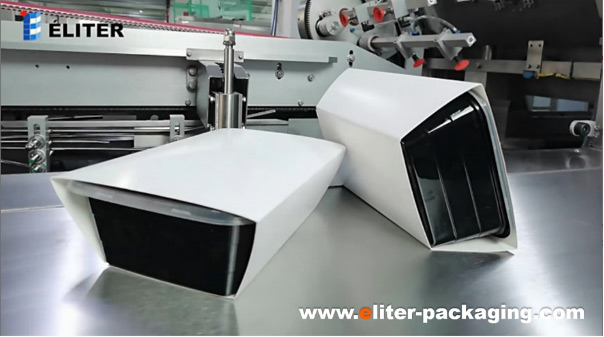The production of frozen and ready-to-eat meals involves a complex system of packaging and processing procedures.
Ready-to-eat meals such as frozen or microwavable ones are extremely popular in the packaged food market, probably due to both their convenience and the fast-moving lifestyle that people often find themselves trapped in rush rime. People has to just grab something from the shelf, get back to my apartment, quid the sleeve and lid, then throw it into the microwave and wait for several minutes to have it done.
From the perspective of food processing and manufacturing companies, the things are totally on the contrary. Ready meals production is a picky topic that requires a high level of cutting-edge and advanced technology for the reason of regulations and food safe-serving standards.
Technologies around packaging and automation have been evolved to cover all processes of ready meals production: from thermoforming of containers, filling, secondary and tertiary packaging.
With this article, we will be introducing those most common packaging machines involved in a ready-to-eat meals production line.
A complete solution for the fresh produce industry can be complex, in contrast to the ease and convenience of getting your ready meal done in just 5 minutes with the microwave. Through the line there will be specific machines designed and manufactured for primary packaging, secondary packaging, and if necessary, tertiary packaging.
The Primary Packaging for Ready-to-Eat Meals
The most fundamental job is to get the trays and containers in other forms ready. The key to keeping them in compliance with the safe food-serving standard is the materials. In general, the most common ones are:
The primary packaging for ready-to-eat meals covers the process of forming the trays, filling the containment and get the containers covered with lids.
In most of the cases, these tasks can be fulfilled on a single set of thermoformer (thermoforming machine) joined by a multihead weigher. The thermoformer hods a roll of material sheet which will be heated to a temperature that it can be bended and then it is formed into desired shape such as trays, cups, pots, tubs, etc. A multihead weigher will fill these formed containers with pasta or rice, whatever it can be. The filled containers are then covered with lids or plastic film to seal the package.
Secondary Packaging with Carton or Cardboard Sleeve
Ready-to-eat meals are most probably wrapped by cardboard sleeves. This is for the reason that sleeves are with their two ends open and thus making it easier to tear the packaging. Further, from the perspective of environmental concerns, and regarding the large market volume of food sector, the sleeves can save considerable amount of printing and paper materials, now that they are of simpler structure compared with a traditional six-sided carton boxes.
A sleeve blank is very simple in its structure, and basically consists of:
And sleeve blank may come in two forms:
Based which of the above-mentioned forms of sleeve the food processing and manufacturing company decides to use, the choices with the packaging machine installed may vary, among which there are:
A wrap-around sleever is sometimes referred to as well as the wrap-around cartoner. The machine uses unglued flat sleeves to wrap the containers. The containers are received randomly from the thermoforming machine, and then timed and organized by the sleever. The wrap-around sleever places flat sleeve blanks on each of the containers received, and sleeves are slid and sealed with adhesive on the glue flap.

Cartoning machine is one the most popular packaging machines that takes a majority of secondary packaging’s market share. Cartoning machines can be the choice for either ready meals loaded in six-sided carton boxes or simply just preglued sleeves without tuck and flaps.
A preglued sleever is just like a cartoning machine. The machine places the preglued sleeve with two ends open, then containers like trays of ready meals are inserted from the open end. The difference is that a pre-glued sleever is specially design with structure to fit the food
Till this stage, a well packed package of ready-to-eat meal is now available for distribution towards retailers all over the country.
Apart from the above-discussed packaging procedures, conveying system for food-filled trays is also a challenging part so as to have the lined installed in way as intelligent, streamlined and cost-effective as possible.
Smart Feed of Food-Filled Trays
The first role of a smart conveyor system on a ready meals packaging line is ensure a smart feed of filled trays to downstream machine, this is essential given that fact that trays from upstream come in a random manner while the downstream packaging machine quires them to be fed in a timed and organized sequence.
Convenience for Cleaning and Sanitation
Smart conveyor system for a food packaging line, to meet the requirements of safe-food serving regulations, are designed and built with a washdown criteria that can facilitate the job of cleaning and maintenance.
A washdown design makes it possible the exposure to water in parts where food may get in direct contact with the equipment.
ELITER Packaging Machinery, manufacturer and global supplier of cartoning machine, wrap-around sleever and film overwrapper, offers versatile secondary packaging automation solutions from affordable cartoning machine for ready meals with preglued sleeve to the most advanced cutting-edge full servo-driven wrap-around sleever, and further more options for the prepared and ready-to-eat meal segment. For more information, please visit: https://www.eliter-packaging.com/
In this episode, I sat down with Beejan Giga, Director | Partner and Caleb Emerson, Senior Results Manager at Carpedia International. We discussed the insights behind their recent Industry Today article, “Thinking Three Moves Ahead” and together we explored how manufacturers can plan more strategically, align with their suppliers, and build the operational discipline needed to support intentional, sustainable growth. It was a conversation packed with practical perspectives on navigating a fast-changing industry landscape.